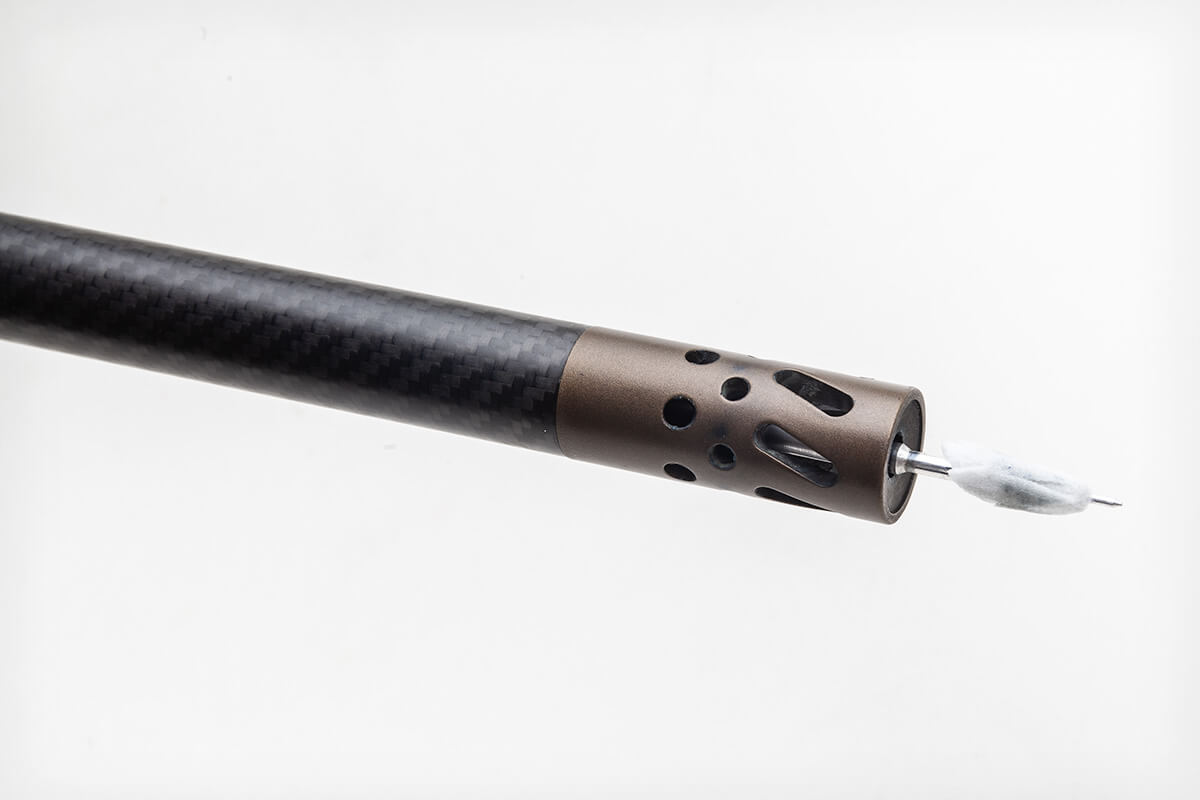
Barrel break-in processes vary, but one thing they have in common is removing copper fouling via bore cleaning.
If you want to get a debate started among rifle shooters, bring up the topic of barrel break-in. Everyone seems to have their own opinion and preferred technique, and many consider it pure blasphemy to deviate from that process. Look the topic up on YouTube and you’ll get a wide variety of answers with even the most reputable sources disagreeing to some extent. Let’s put aside all of that baggage and break this process down to the basics of what it is—and what it isn’t.
Break-in is the process of firing projectiles down the bore to remove burrs and other imperfections through the heat and friction of a live-fire event. When a chamber is cut into a rifled blank using a reamer, it can leave sharp edges, high spots and the like. The better the chambering technique, the less likely this is to occur at a problematic level.
Those imperfections in the bore, which usually appear at the throat, can strip minute amounts of copper or gilding metal from a bullet jacket under the heat and pressure of the bullet passing through. The bore can become effectively coated by this jacket material, something we call copper fouling. Most break-in procedures involve removing this fouling at some interval to allow the bullet to apply its polishing force to the raw steel.

“We are trying to smooth out all of those little imperfections in the bore,” Gunwerks’ Aaron Davidson told me. “We really should call it ‘barrel seasoning’ instead of ‘barrel break-in’ since that’s what we are trying to accomplish.”
Before we get too deep into techniques for breaking-in or seasoning the bore, let’s talk about the difference between factory barrels and premium custom blanks. Factory barrels are all over the place in terms of quality. It can absolutely be the luck of the draw when it comes to getting a great bore from a mass-produced rifle. Because of this, the effects of breaking-in a factory barrel can be more dramatic and effective than with a premium barrel. Because they are often rougher, there is more work for the bullets to accomplish during the break-in process and it can take far more effort.
Premium barrels such as those made by Krieger, Bartlein, Douglas and Lilja are a horse of a different color. These barrels are hand-lapped after the rifling process, a technique that uses a lead tool that fits the bore and is coated with an abrasive compound. These barrels shine like a mirror after lapping and show few, if any imperfections.
It’s only when we shove a chamber reamer into one of these bores that we can create problems. A good gunsmith will minimize this, which means that a premium barrel that is fit and chambered properly will need minimal break-in.
So how do we do it? Every barrel maker has their own recommendation. Lilja’s instructions are to clean the bore after every shot for the first 10 to 12 shots and then after each five shots until the total number reaches 25 to 30. Getting the copper out can be a challenge after the first few shots, but it gets easier as you go. This is how you know that the process is working.
John Krieger at Krieger Barrels takes a less-rigid approach. He recommends letting the rifle tell you what it needs. The more fouling you encounter, the more frequent the cleaning interval. I tend to be more of this school, maybe because I’m lazy when it comes to cleaning guns.
I’ve gone through painstaking processes to break-in barrels in years past and have other incredibly accurate rifles where I performed no break-in at all. I cannot empirically say I’ve ever noticed much of a difference in either accuracy or a propensity to foul. A common-sense way to approach break-in is to incorporate it into the process of zeroing and testing loads in a new rifle. Barrels have a limited lifespan, and putting 100 rounds through the bore can eat up as much as 10 percent of that.
If I am going to break in a rifle, I’ll bring some cleaning supplies along with me for a rifle’s first range trip. There are two ways to go here: mechanical and chemical. A patch coated in JB Bore Paste can be a great tool to remove copper fouling through simple elbow grease. On the other hand, harsh ammonia-based solvents such as Sweet’s, Montana Extreme and others do a great job.
Use whatever you prefer but keep in mind that the most powerful chemical solvents are not designed to be left it in the bore. I’ve tested several products on polished blanks of 4140 steel and they can eat away at the bore if left to soak too long. A bore scope can be a very effective tool in aiding you through this process. The scope don’t lie.
Take your new rifle to the range. Bore-sight your scope, fire a round and then clean the bore until there’s no sign of copper. Make scope adjustments as needed, fire another round and then clean again. Whether you are a handloader or shoot factory ammo, you’re going to want to see what load your rifle likes.
At whatever interval you find that the copper is easier to remove, begin shooting three or five-shot groups to evaluate accuracy potential. By the end of your range trip, your barrel should be good to go.
Will all of this help accuracy? Probably not to any measurable level. It may, and I repeat may, increase the interval at which fouling will degrade accuracy—which is a good thing.









